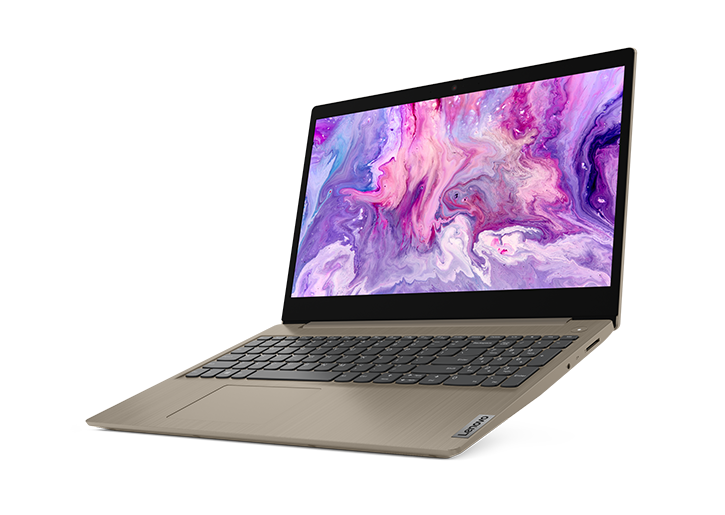Best Laptops for 2021
Please note, as an Amazon Associate I earn from qualifying purchases.
Lenovo IdeaPad 3
Some budget Chromebooks are clearly cheap-looking, with ugly styling and questionable build quality. Not so with the attractive, solidly built Lenovo IdeaPad 3 Chromebook ($249.99). This bargain laptop achieves its low price by compromising in a few sensible areas, such as screen resolution and memory quantity. Its Intel Celeron processor, 4GB of RAM, and 720p HD display are skimpy by Windows and Mac standards, but they’re adequate for the typical Chrome OS user, and their low unit costs seem to have freed Lenovo from having to skimp on the IdeaPad 3’s engineering and manufacturing. It feels much more solid than your average $250 laptop.
From the outside, the Platinum Gray IdeaPad 3 isn’t gorgeous, but it does appear sleek and modern. No screws or gaps mar the clean lines of the display lid or the edges of the laptop, which is clad in a mixture of polycarbonate and ABS plastics. The IdeaPad 3 is relatively light for a 14-inch laptop, though it’s a bit on the bulky side. It weighs 3.08 pounds and measures 0.74 by 12.9 by 9.2 inches, comparable with the HP Chromebook 14. It’s significantly thicker than the 0.5-inch-thick Google Pixelbook Go, though that premium Chromebook has a smaller 13.3-inch screen.
If you need a Chromebook for simple computing needs, and budget is your primary shopping criteria, the IdeaPad 3 will likely meet your needs. By giving up a high-resolution display, you get enough computing power for basic tasks, plenty of external connectivity, excellent battery life, and a reasonably attractive, well-built chassis.
The IdeaPad 3’s strengths make it a strong choice for an elementary- or middle-school student. While you could use it yourself, as well, it’s best not to make it your main machine because of its low-resolution display. If you can spend an extra $100 or so, your eyes will thank you for choosing a model with a 1080p screen resolution.
ASUS ROG Zephyrus G15
When the Asus ROG Zephyrus G15 (GA503Q) showed up at my door, the name eluded me for a moment; I didn’t recognize it as the sibling to the Asus ROG Zephyrus G14, the best laptop I’ve ever reviewed. I’m a picky person and this machine already had a lot to live up to if it was going to succeed like its smaller sibling, and yet it managed to blow me away (almost).
For a pricier $2,499, the Zephyrus G15 offers amazing performance from its AMD Ryzen 9 5900HS processor and Nvidia GeForce RTX 3080 GPU. It even boasts a similarly long-lasting battery life, a clicky keyboard, a 15.6-inch, 1440p display and a set of powerful speakers wrapped up in an even more elegant Moonlight White design.
However, the Zephyrus G15 drops the ball on the display. Yes, its display is sharper and smoother, but it’s less colorful and duller than the one on the Zephyrus G14, which is a mid-range gaming laptop. It also doesn’t have a webcam, which is annoying.
That’s why I can’t give the Zephyrus G15 a perfect score, even though it doesn’t take much away from how amazing this gaming laptop is. It’s easily one of the best gaming laptops and best VR-ready laptops that you can buy right now.
It’s tough to make a hit more than once, but Asus managed to drop a banger. The Asus ROG Zephyrus G15 (GA503Q) totes around some of the most powerful components you can get right now. Almost every part of this machine is surprisingly great and well worth the money you’ll be paying. However, it’s not perfect. It’s one thing if the display isn’t as vibrant as the average premium gaming laptop, but it’s another if it can’t match up to its $1,000 cheaper sibling. Plus, a webcam would be nice.
I personally think this is the better gaming laptop amongst its competitors, but each rival has its advantages. If you’re looking for raw performance, the Alienware m17 R4 killed it on those benchmarks. It also has a brighter and more colorful display.
Regardless, the Zephyrus G15 is one of the few best gaming laptops that you can buy with an RTX 3080 GPU.
MacBook M1 (2020)
It’s no wonder Apple has hyped the MacBook Air (M1, 2020) as a drastic reimagining of its lightest and smallest laptop. That’s all due to the new Apple M1 CPU, Apple’s ARM-based chip, which has replaced the Intel processors that powered the previous iterations of the Air. Not to mention, macOS 11 Big Sur comes preinstalled.
This custom chip, according to the Cupertino firm, not only comes with additional performance benefits but runs better and longer when on battery mode. And, since we’ve now tested the MacBook Air (M1, 2020), we can see how Apple’s claims really hold up.
The MacBook Air (M1, 2020) fortunately goes for the same price as its predecessor ($999 / £999 / AU$1,599), making this an extremely attractive small form laptop. While the previous MacBook Air (2020) is not obsolete, this updated version gives you new hardware, most notably the M1 chip, for the same price. If the earlier 2020 model didn’t sway you, this one will.



